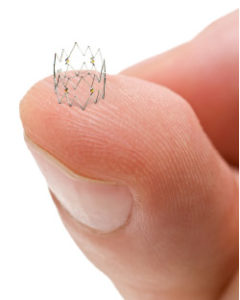
The US Food and Drug Administration (FDA) has granted staged approval for Intact Vascular’s investigational device exemption (IDE) application to begin its TOBA II BTK (Tack optimised balloon angioplasty II below the knee) clinical study. The study will examine the safety and efficacy of the Tack endovascular system when used to repair dissections in the arteries below the knee following percutaneous transluminal angioplasty as a treatment for critical limb ischaemia.
Patrick J Geraghty, professor of Surgery and Radiology at the Washington University School of Medicine of St Louis, USA, and George Adams, director of Cardiovascular and Peripheral Vascular Research, UNC REX Hospital, Raleigh, USA, are national principal investigators for the study.
The TOBA II BTK study is designed to enrol 232 subjects at up to a total of 50 US and international sites. Patients experiencing symptoms from advanced peripheral artery disease below the knee will be eligible. Study subjects will be treated with the Tack endovascular system following standard balloon angioplasty in the popliteal or tibial arteries when a dissection occurs.
Bruce J Shook, president and chief executive officer at Intact Vascular, stated, “The TOBA II BTK clinical study represents an exciting opportunity to bring the first vascular implant to the US market for the treatment of critical limb ischaemia patients. We are thrilled with the level of enthusiasm from the clinical community and look forward to collaborating with them on this important advancement for critical limb ischaemia care.”
In July 2016, 12-month results from the TOBA study, which examined use of the Tack implant to treat dissections above the knee, were published in the Journal of Vascular Surgery. The 12-month results from the TOBA BTK pilot study were also released at the Society for Cardiac Angiography and Interventions (SCAI) 2016 annual meeting (4–7 May, Orlando, USA). Both of these studies demonstrated the potential of the Tack implant to improve arterial healing following angioplasty above and below the knee.
Geraghty stated, “Critical limb ischaemia is a debilitating condition for many patients with serious downstream consequences such as amputation and loss of independence. The disease is growing rapidly, especially with the increasing incidence of diabetes, creating an urgent need for more effective treatments. The TOBA II BTK study represents an exciting opportunity to improve the long-term results associated with angioplasty, which is our primary, minimally invasive treatment for critical limb ischaemia. This study is the first pivotal trial ever conducted in the USA supporting the FDA approval of an implantable device for critical limb ischaemia treatment.”
Adams added, “We are very enthusiastic about the commencement of the TOBA II BTK clinical study. The Tack endovascular system is uniquely tailored for use in arteries below the knee. These arteries are small in diameter, so the minimal metal burden associated with the Tack implant and the implant’s ability to adapt to the diameter of the artery are both ideal for dissection repair in this part of the leg.”









